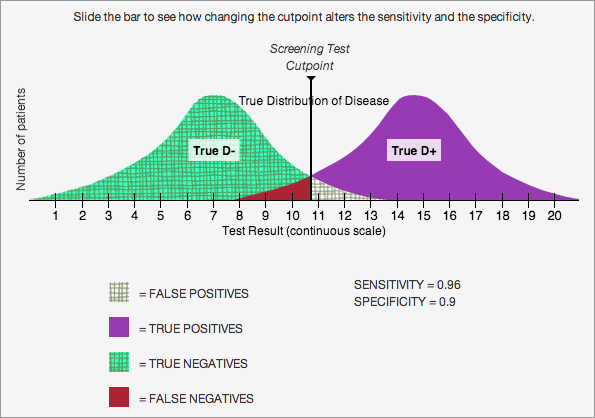Laboratory Testing
Validity
A valid test is a test that will be positive if a person has the disease and will be negative if the person does not have a disease. A valid test measures what it is supposed to measure. Validity is equal to sensitivity and specificity. Thus, a perfect lab test would be 100% sensitive and 100% specific. All non-diseased individuals test negative and are true negatives (TN) and all diseased individuals test positive and are true positives (TP) at a specified cut-off point. The graph below illustrates performance of a test that has 96% sensitivity and 90% specificity. Unfortunately, no test is 100% sensitive and 100% specific.

Despite the fact that we want tests to have high sensitivity and high specificity, we recognize that they are inversely related. As sensitivity increases, specificity decreases and vice versa. How does this affect decision making in real life situations?
Question 1:
Question 1:
Consider the scenario of screening all infants for an illness that can be life-threatening if it is not detected. You have a choice between two blood tests, one is 99% specific and 97% sensitive and the other is the reverse, 97% specific and 99% sensitive. Which blood test would you choose for this situation?